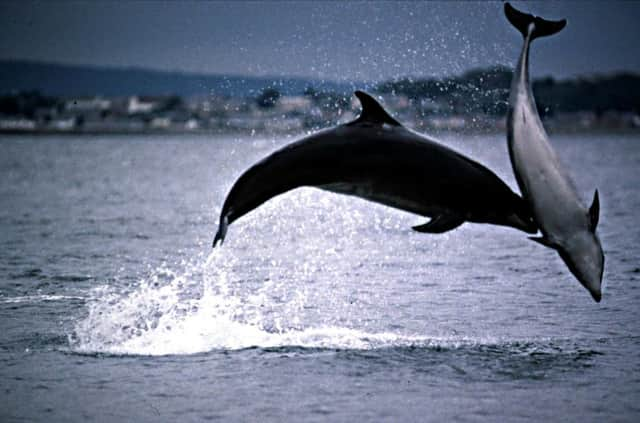Ilona Amos: Caution needed over Moray Firth oil transfers


The seas around Scotland are wonderfully rich in marine life, including many rare species as well as some of the world’s best loved and most charismatic wildlife.
Consider the Moray Firth, which has become famous for hosting the planet’s most northerly resident population of bottlenose dolphins. These intelligent and playful creatures enjoy celebrity status, with visitors travelling from far and wide to enjoy their crowd-pleasing antics.
Advertisement
Hide AdAdvertisement
Hide AdThere may be only around 130 of them, but analysis shows these few individuals bring in at least £4 million a year to the Scottish economy, part of a burgeoning wildlife tourism industry that generates more than £65m annually.
It was these dolphins that lured more than 500 folk down to Nairn beach at the weekend. They weren’t there to take pictures and umm and ahh at displays of aquatic acrobatics, however. They gathered to demonstrate opposition to proposals from the local port trust to allow ship-to-ship transfers of millions of tonnes of crude oil in waters where the dolphin pods eat and breed.
The Port of Cromarty Firth has applied for a licence to the maritime and Coastguard Agency for 48 transfers of crude oil annually, with an estimate worth of around £750,000 a year.
Cromarty is the leading cruise port serving the Highland region, welcoming 63 ships carrying 96,500 passengers this year. But the trust is seeking new income streams to replace falling revenue after the Beatrice oil field closed down in 2015. They says oil transfers offer a crucial lifeline for the region, securing local jobs and bringing in much-needed investment.
A consultation on the proposals ended in February and attracted around 340 responses from organisations including community councils, the Scottish Wildlife Trust, Scottish Environmental Protection Agency, Scottish Natural Heritage and Whale and Dolphin Conservation.
Objectors believe operations, which will see more than eight million tonnes of oil transferred between tankers while anchored in the Inner Moray Firth, pose an unacceptable risk to dolphins and the wider environment.
Locals and activists from the campaign group Cromarty Rising fear toxic fumes given off while shifting the oil could cause long-term health problems for marine mammals, while even minor oil spills would severely damage the entire marine ecosystem. They claim increased shipping traffic will create hazardous levels of underwater noise, which can be damaging to cetaceans. On top of that, nearly two million tonnes of dirty ballast water, which could contain harmful contaminants, will be discharged into the firth each year.
They insist they support sustainable development so long as it’s “the right plan in the right place”, and believe transfers could be safely carried at Nigg oil terminal, where proper air and water controls are in place.
Advertisement
Hide AdAdvertisement
Hide AdA revised licence application is expected early next year, but campaigners fear their views will be ignored in favour of fiscal gains. They have begun preparing a war chest, with plans to launch a legal challenge if the transfers get the go-ahead. They have already raised half of their initial £30,000 target. They are also calling for Scottish ministers to intervene in the case, even though it is not a devolved issue.
Surely it’s best to err on the side of caution – we don’t want our own mini Deepwater Horizon disaster. If the transfers were to be handled at Nigg then the port could have it’s cake and eat it.